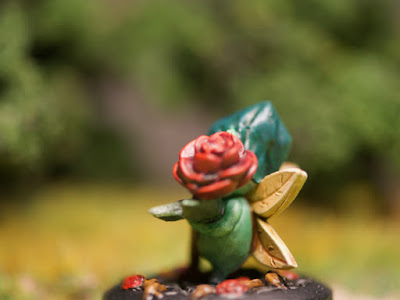It seems we’re already at the end of another Challenge. When did that happen? I’ve got quite a few more bits and pieces on the workbench, but I guess they’ll be finished some other time. Thank you Curt and the Minions for organizing the Challenge and keeping all the insanity in order.
I’m surely not the only one who’s found it a strange time, even more so than in 2021. I completely understand how some in our community are less inclined to put paint to plastic, as it were, but I’ve found the gentle pressure of the Challenge encouraging. Getting things done is rewarding and satisfying in itself and focusing on a mini project at hand is a pleasant distraction of things going on elsewhere in the world. So thank you again for offering that, and thanks to everyone for the kind responses to my posts (oddly enough I don’t seem to be able to post comments myself).
That said, on to my final submission. Volume-wise, it’s certainly the biggest I’ve ever managed in any Challenge. It’s, again, part of a project for WSS that in my hands has ballooned beyond all reasonable proportions (I’d like to blame Guy, but that wouldn’t be fair). At least it should allow me to produce some decent photographs as and when we need them in the magazine.
For storage reasons, I’ve always made my terrain modular, with separate buildings, fences and ‘scatter’ that can be assembled at random. That absolutely takes up a lot less space, but I’ve recently come across some wonderful examples of based buildings on Twitter. So I figured I’d give that a try. I originally planned to leave the buildings themselves separate, but that plan went out the window when basing material was applied. Separate garden bases may be the golden mean. Something to try another time.
The buildings - well included - on these bases are mostly from the First Corps range, which are lovely, sturdy, and characterful resin castings. The house with the rusty corrugated iron roof is a 3D print by Patrick Miniatures. Apart from some scale garbage bins, it’s the first printed model I’ve ever painted and I’m very happy with how it turned out. I’ll definitely try more!
The bases are made from bookbinder’s board, cardboard that’s been treated to withstand moisture, with fences from Rubicon and Renedra, and various bits and pieces from Warbases and the ‘spares bin’. The cabbage patch is a metal and resin piece from Architects of War that had been languishing in the ‘to-paint’ box for a decade or so.
I’m always a bit uncertain about point calculation for terrain, but I can at least give some measurements, and leave the final judgement, as always, to Curt and the minions:
- the field with storage hut is about 9*12” and 2” high at its highest point
- the well is about 4*6”, and apart from the post is only about 1.5” high
- the house with the rusted tin roof is about 7*11” and about 5” high
- the house with shed is about 8*13” and the same heigh as the other


















































